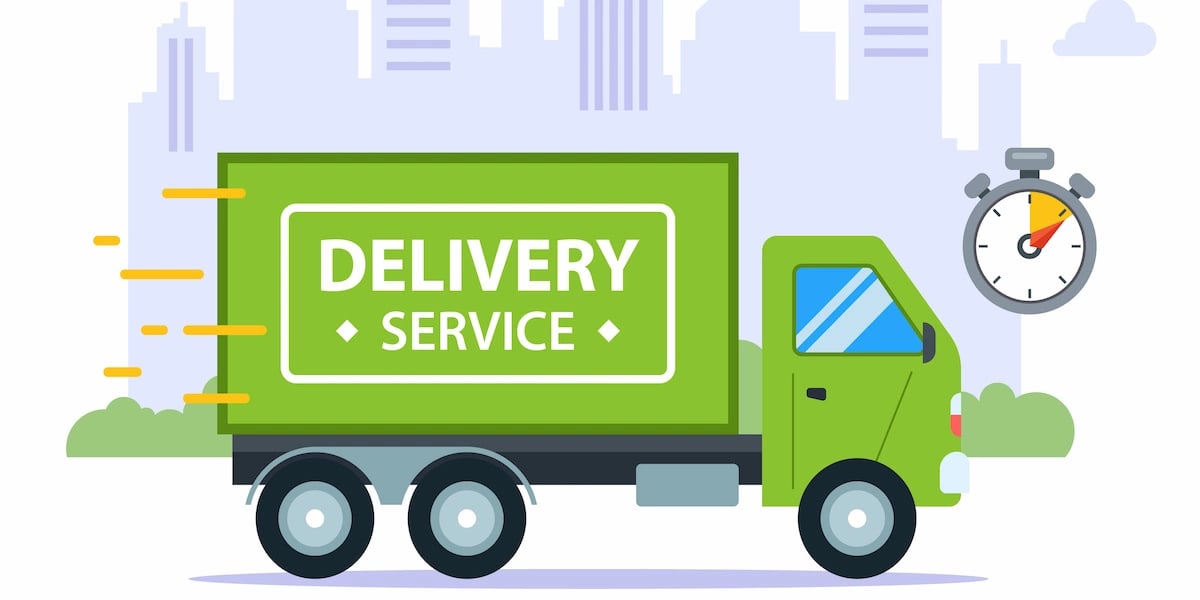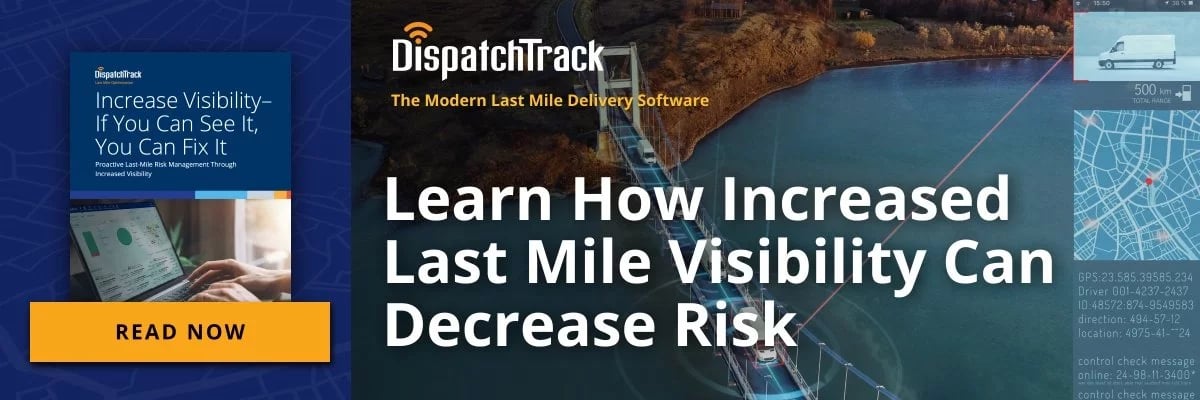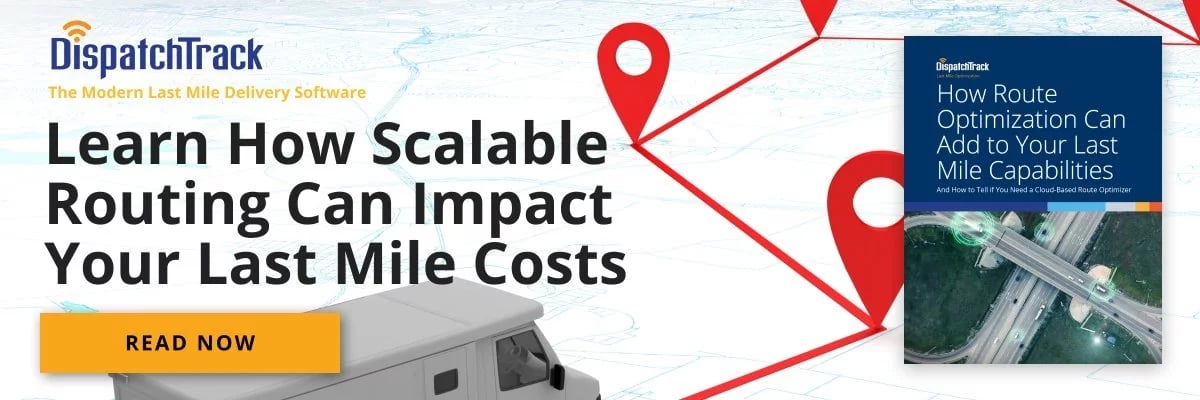When it comes to getting more sustainable, some industries have a higher hill to climb than others. Currently, 62% of executives believe they need a sustainability strategy to be competitive, while another 22% sees it as important for their future—but when it comes to the supply chain and logistics sectors, effective sustainability strategies can be hard to execute.

When it comes to last mile deliveries in particular, achieving sustainability goals can seem particularly daunting. Data from the World Economic Forum suggests that the number of delivery vehicles in inner cities will have to jump up 36% by 2030 to keep pace with increasing demand for e-commerce delivery, and emissions are expected to increase as a result. How can businesses grapple with ever-increasing demand in this segment of the supply chain that’s historically been inefficient and hard to optimize?
The good news for retailers, distributors, wholesalers, and other businesses that have to effectively manage their deliveries in order to delight their customers, is that we’re all in this together. Climate change is a global problem that no one business or sector can tackle unilaterally. That’s why one of the most important keys to getting more sustainable is to actually engage your customers in the process. When we’re all on the same page, and we all work towards a common goal, we can make good things happen.
The question is: how do you put that into practice when it comes to delivery management?
How and Why Customer Can Drive Greener Deliveries
If you’re trying to get greener with your deliveries, there’s an excellent chance that you and your customers are on the same page. Studies have shown that a company’s sustainability bona fides increasingly impact the way that customers perceive the company’s brand overall—in other words, it’s possible to impress your customers, build your brand, and boost loyalty by working to decrease your carbon footprint across deliveries.
When customers want something, they tend to vote with their wallets. This occurs at the level of choosing which brands to patronize, but it can also impact decisions once the customer has already picked a retailer. For instance, if you give your customers more sustainable shipping options—e.g. receiving items at a slightly later date so they can be bundled together more efficiently or opting for more sustainable packaging—many of them will take you up on options that are “less convenient” in the traditional sense. In this way, you can get buy-in to arrange deliveries in the most carbon-efficient possible way—without worrying that your customers are going to object to waiting an extra day for delivery.
At the end of the day, it’s about making your customers feel good about the purchases and delivery decisions that they’re making. When you can do that, you can turn carbon efficiency into a stronger brand.

Why Is Last Mile Sustainability So Challenging?
Of course, when you promise something to your customers, you have to deliver. These are rules to live by in last mile deliveries, but it applies to making promises about sustainability as well: if you’re going to offer green delivery options, you need to make good on actually delivering in a more sustainable way.
Anyone in a supply chain business can tell you that that’s easier said than done, particularly across the last mile. Why? There are a handful of reasons:
- The last mile is a misnomer—Making a large number of stops along a given route requires a huge number of miles driven, which leads directly to fuel consumption and carbon emissions. When delivery complexity makes your routes less efficient, those emissions increase.
- Wastage is fairly common—This can include anything from vehicle idling to food spoilage to perfectly good inventory being consigned or thrown away due to a lack of auditability. Unfortunately, modern deliveries are often a black box. When you lack the visibility to quantify the amount of waste in your existing supply chain, that waste becomes impossible to reduce or optimize.
- First attempt delivery success is low—Any time a delivery attempt fails, you wind up driving more miles. At best, you can slot the missed delivery in later in the day while your driver is still in the same area; at worst, you have to re-drive all those miles again the next day.
There’s no one-size-fits-all solution that can help you tackle these challenges in one fell swoop. But when you have the tools to achieve consistent right-time delivery, you can start to gain visibility and increase efficiency in ways that have a real impact on sustainability.
Best Practices for Customer Engagement in Last Mile Delivery
Much has been said about how route optimization can decrease miles driven and thereby reduce emissions. No doubt, delivery routing and dispatch software is an incredibly powerful tool for doing just that. But if we narrow our focus to how customer engagement can impact sustainability, we wind up with a few specific best practices that can help you build your brand and your boost your sustainability initiatives at the same time.
1. Give customers green delivery options
Let customers know right off the bat that you’re taking sustainability seriously by presenting them with a range of options at checkout. Many customers will opt for delivery at a later date (e.g. not same-day delivery) if they know it will impact emissions. To make this possible, you’ll need to have clear parameters for your delivery capacity, and an effective method of planning deliveries that translates more flexible delivery requests into more efficient deliveries on the whole.
2. Keep your customers in the loop
Like we said above, failed delivery attempts have a tremendous impact on emissions. Luckily, when you have the ability to give your customers visibility into their orders as they’re being delivered, you can significantly decrease the odds that the customer’s not at home when the driver shows up. This can be brought about by focusing on a few things:
- Pre-routing messages that let customers know about their delivery date a day or two before the actual delivery.
- Proactive notifications on the day of delivery when the driver starts their route, when the truck is almost at the customer’s house, etc
- Live ETA, self-serve ETA tracking via a customer friendly delivery portal
- Two-way communication between customers and dispatchers in case something crops up on the day of delivery
- Proactive messages when an order needs to be rescheduled because of unforeseen disruptions
When you can keep customers engaged in this way, you make it much more likely that they’ll be home to receive the delivery when the truck arrives.
3. Capture digital proof of delivery and documentation
One of the areas that can produce the most waste in last mile logistics is returns management. But this is another area where effective customer engagement—and clear documentation—during and after the delivery can be a big help. Simply put, if you have clear documentation of why a particular item is slated to be returned, you can more effectively triage the items that come back to your warehouse. Ideally, when nothing is wrong with you delivered, you’d be able to minimize waste by finding a new buyer. Likewise, clear PoD can help prevent returns based on damage that wasn’t there at (or caused by) the delivery.
As sustainability gets more and more important to delivery management, effectively engaging your customers is going to be key to boosting efficiency and decreasing waste. To really leverage customer engagement into greener deliveries, you’ll need a right-time delivery management solution that empowers you to easily communicate with customers across a number of different touchpoints.
